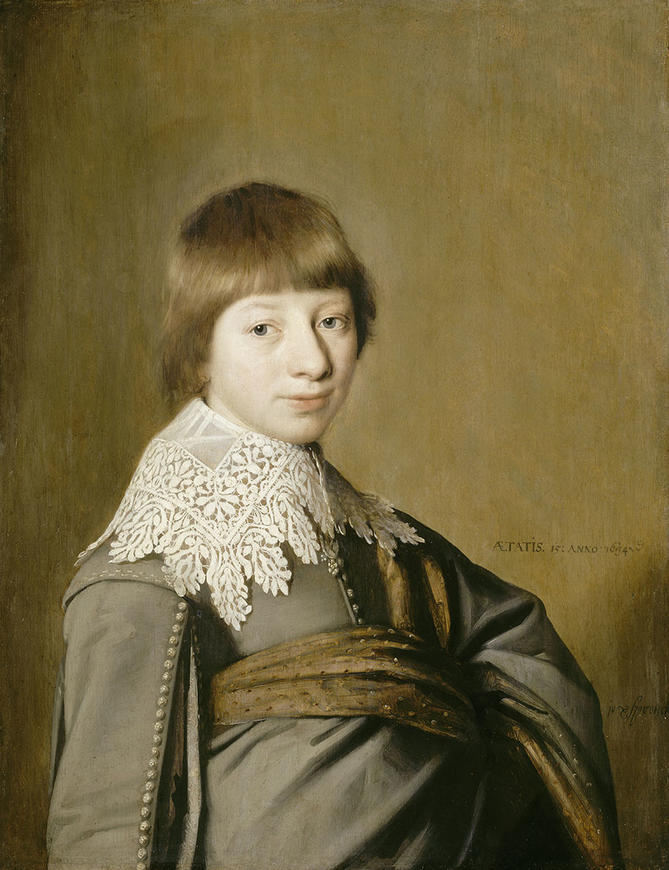The boy, whose name is unknown, is fifteen years old. He poses, turned three-quarters towards the viewer, but his body is shifted to the left to reveal a large, monochrome, transparent background behind him. He smiles at us shyly; he looks uneasy and fragile. However, he strikes a manly pose, his left fist resting on his hip. Is this the painter's idea or his own, to look older?
The delicate light reflects off his eyes, skin and hair. It creates shades of white and cream, but then pink on his cheeks. It forms a gradient of blond and brown on his fringe. The light also hits the large, finely detailed white lace collar. This attention to detail was Jan Verspronck's trademark, very popular with wealthy Dutch bourgeois women, as he knew how to accurately depict every ornament of their outfits.
The independence and economic boom of the first half of the 17th century made the Dutch very proud, so much so that portrait commissions poured in. These were mainly family portraits, or even more often, individual portraits, as is the case here.
Inv. P 300

The boy, whose name is unknown, is fifteen years old. He poses, turned three-quarters towards the viewer, but his body is shifted to the left to reveal a large, monochrome, transparent background behind him. He smiles at us shyly; he looks uneasy and fragile. However, he strikes a manly pose, his left fist resting on his hip. Is this the painter's idea or his own, to look older?
The delicate light reflects off his eyes, skin and hair. It creates shades of white and cream, but then pink on his cheeks. It forms a gradient of blond and brown on his fringe. The light also hits the large, finely detailed white lace collar. This attention to detail was Jan Verspronck's trademark, very popular with wealthy Dutch bourgeois women, as he knew how to accurately depict every ornament of their outfits.
The independence and economic boom of the first half of the 17th century made the Dutch very proud, so much so that portrait commissions poured in. These were mainly family portraits, or even more often, individual portraits, as is the case here.
Inv. P 300